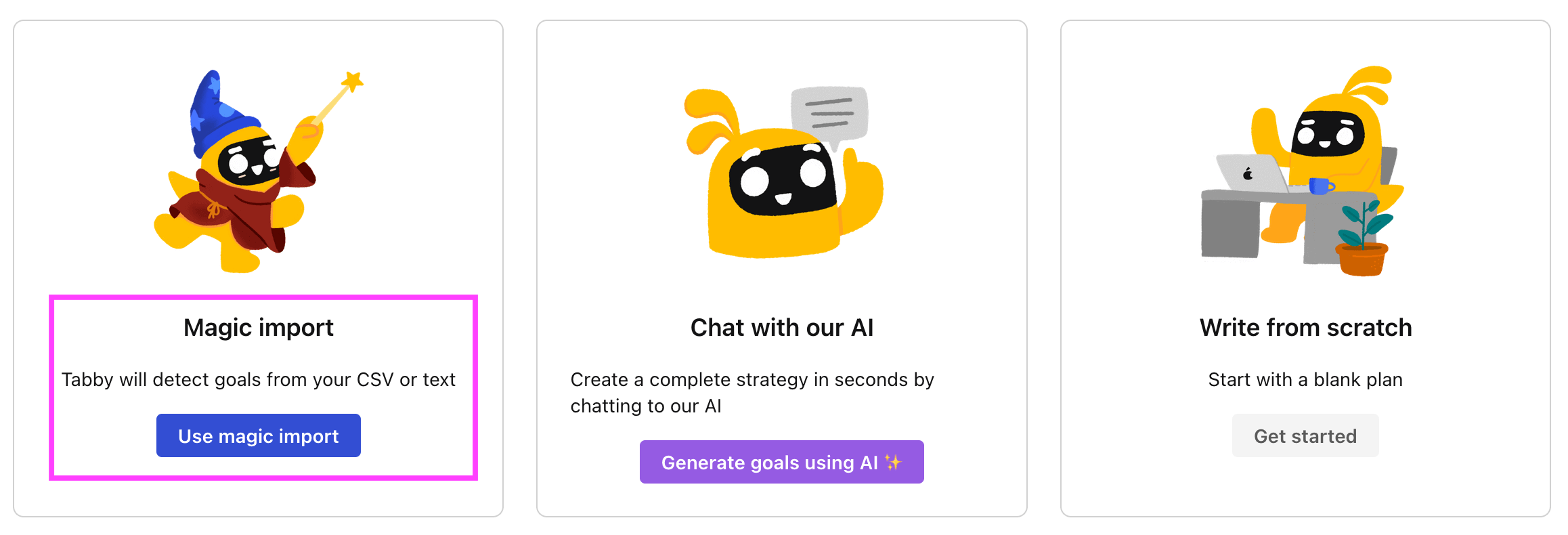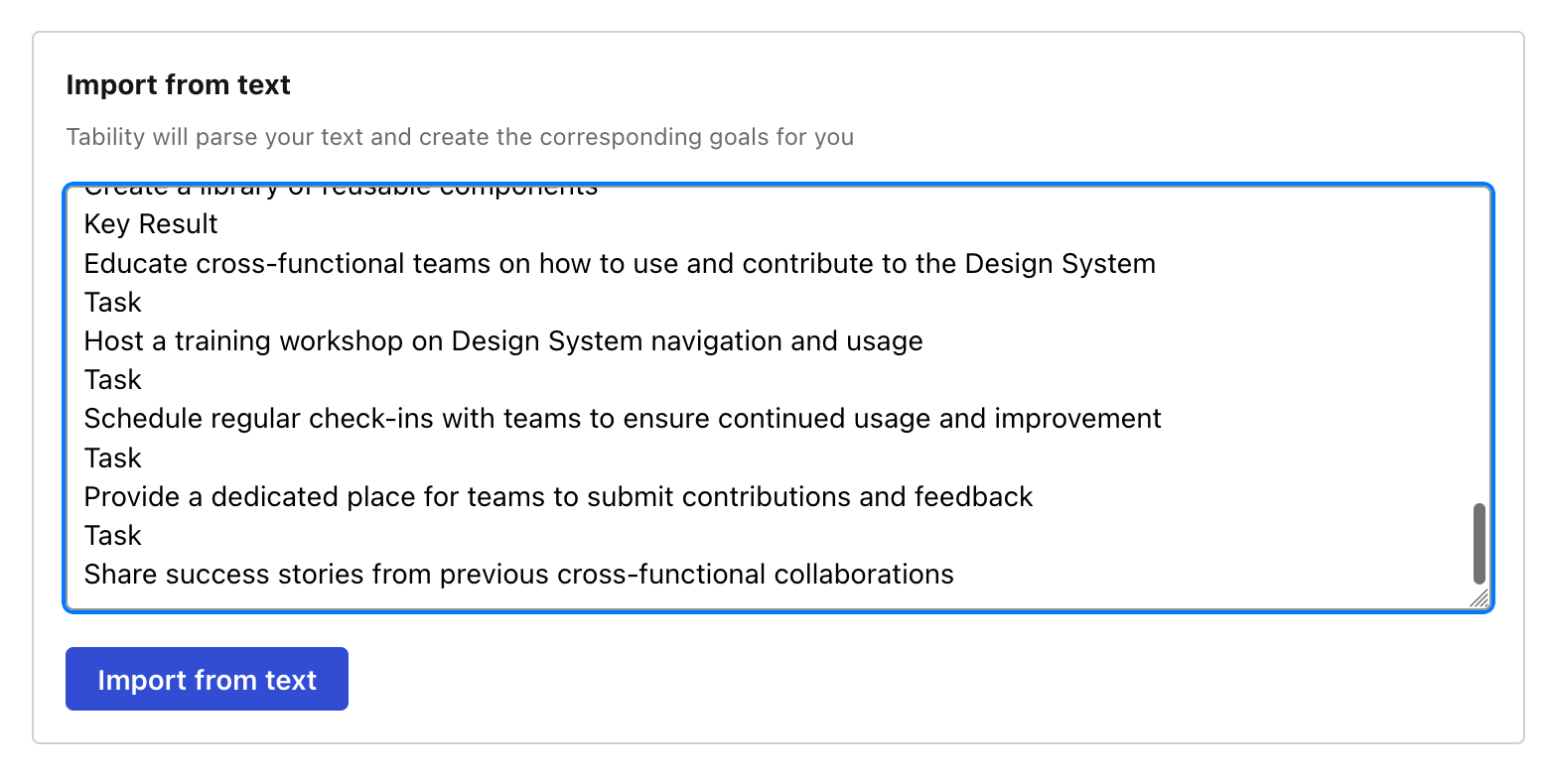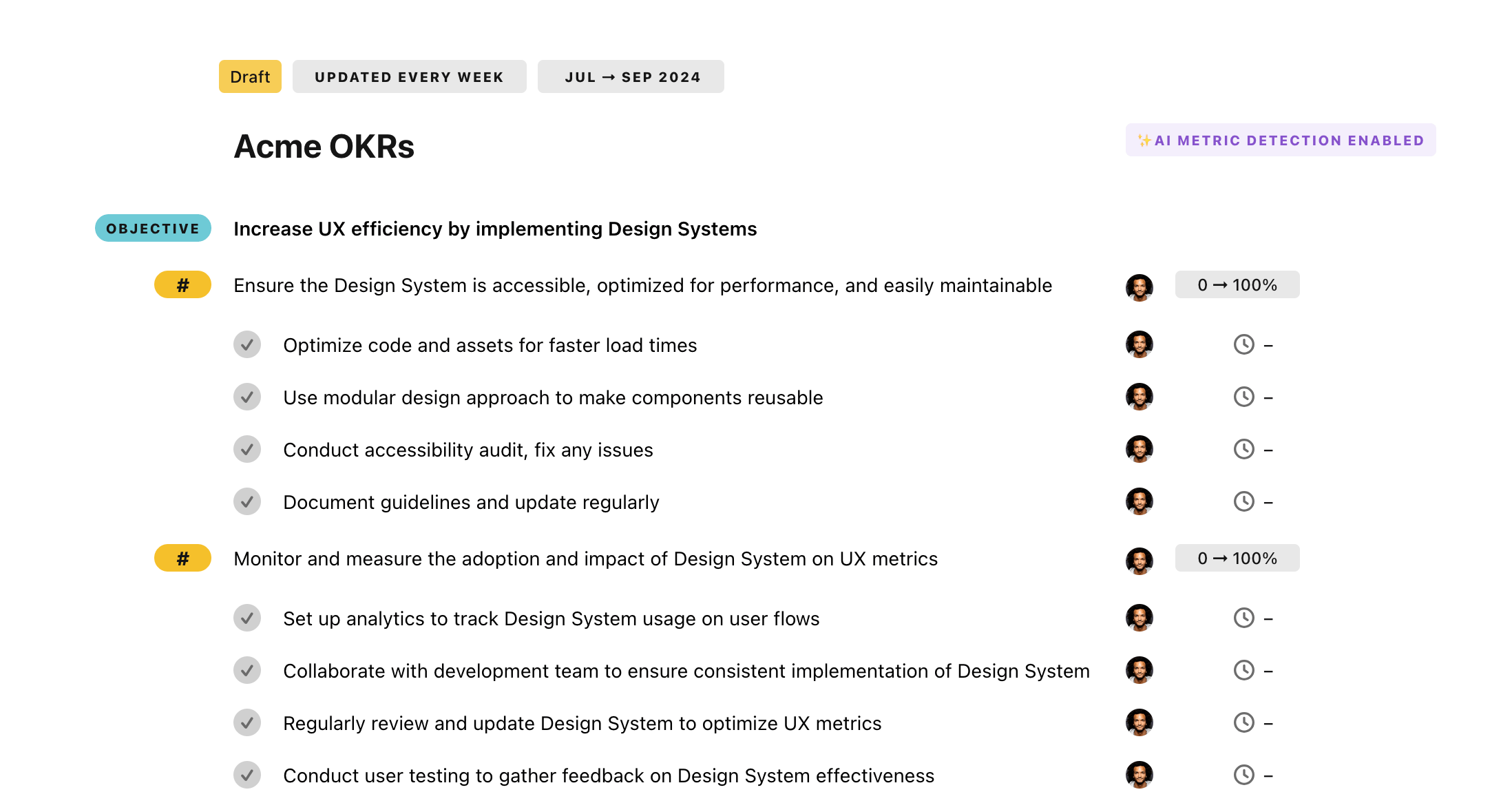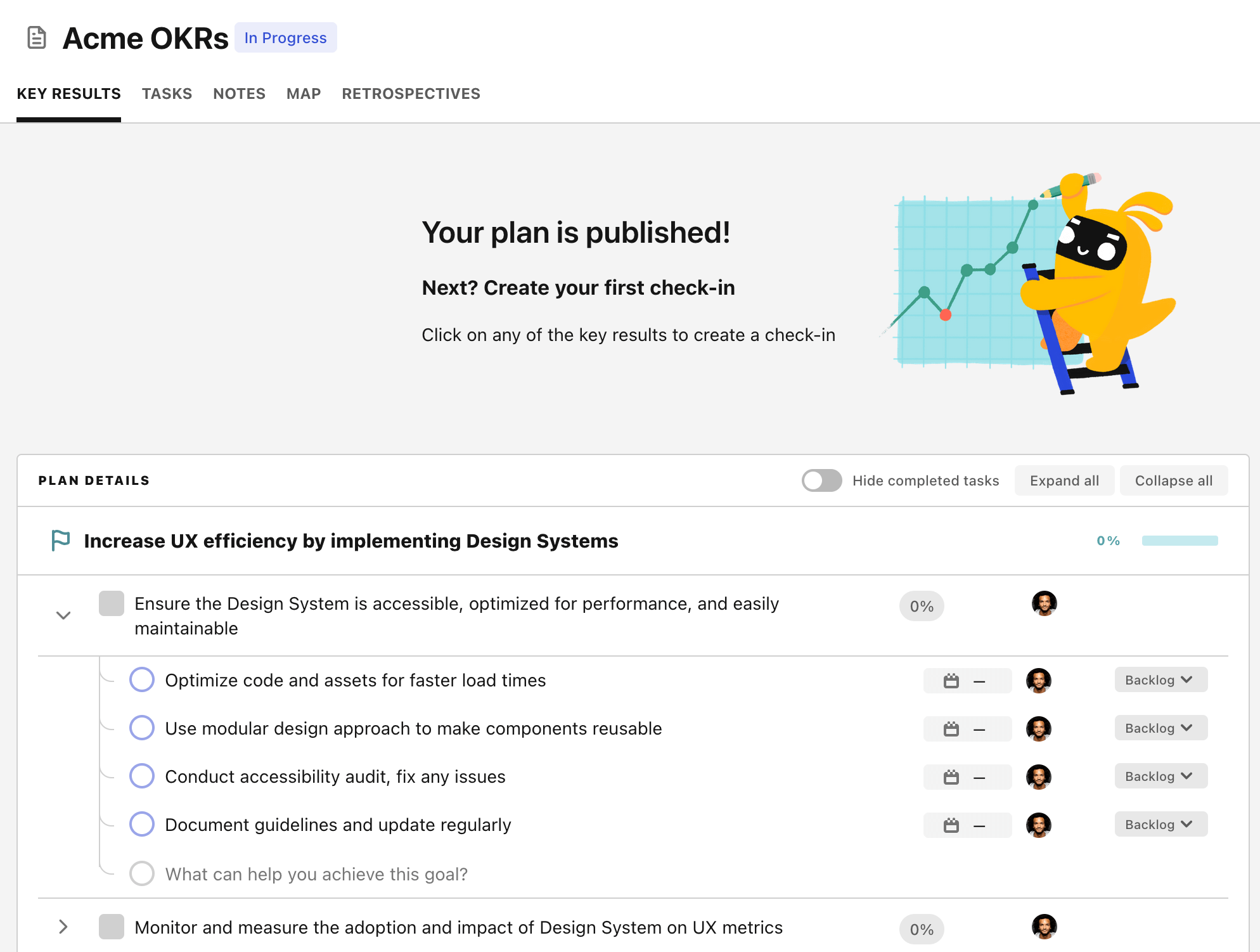OKR template to ensure High Uptime
Your OKR template
Another focus is achieving a 100% success rate in scheduled maintenance tasks with minimal impact on uptime. For this, maintenance procedures will be optimized, schedules regularly assessed and updated, maintenance staff trained comprehensively and a proactive maintenance strategy put in place.
An additional goal is improving response time by 15%, mainly by optimizing the server and network setups. The initiatives here include a network infrastructure audit, optimizing server settings, a thorough analysis of server configurations and applying any recommended changes informed by these studies.
Lastly, the OKR also aims for enhanced monitoring via automated alerts for potential disruptions. Initiatives suggesting the development of an automated alert system, its integration, comprehensive testing, and identification of key metrics for potential disruptions, contribute to this goal.
ObjectiveEnsure High Uptime
KRReduce system downtime by 20% through proactive maintenance and timely issue resolution
Establish a real-time monitoring system to detect and address potential issues promptly
Conduct regular training sessions for staff to enhance their technical troubleshooting skills
Implement regular equipment inspections and perform preventative maintenance at scheduled intervals
Develop a comprehensive troubleshooting guide for efficient problem identification and resolution
KRAchieve 100% success rate in scheduled maintenance activities with minimal impact on uptime
Streamline and optimize maintenance procedures for increased efficiency and reduced downtime
Regularly assess and update maintenance schedules to ensure optimal timing and resource allocation
Provide comprehensive training for maintenance staff to enhance their skills and knowledge base
Implement a proactive maintenance strategy to identify and prevent potential issues beforehand
KRImprove response time by 15% by optimizing server configurations and network infrastructure
Assess network infrastructure to identify areas for improvement and optimize network configurations
Optimize server settings and allocate resources efficiently based on the analysis findings
Conduct a thorough analysis of the server configurations to identify potential inefficiencies
Implement recommended changes to server configurations and network infrastructure for enhanced response time
KRIncrease monitoring coverage by implementing automated alerts for potential service disruptions
Develop automated alert system based on identified metrics and criteria
Implement and integrate automated alert system into existing monitoring infrastructure
Test and validate automated alert system for accuracy and effectiveness
Identify key metrics and criteria for potential service disruptions
How to edit and track OKRs with Tability
You'll probably want to edit the examples in this post, and Tability is the perfect tool for it.
Tability is an AI-powered platform that helps teams set better goals, monitor execution, and get help to achieve their objectives faster.
With Tability you can:
- Use AI to draft a complete set of OKRs in seconds
- Connect your OKRs and team goals to your project
- Automate reporting with integrations and built-in dashboard
Instead of having to copy the content of the OKR examples in a doc or spreadsheet, you can use Tability’s magic importer to start using any of the examples in this page.
The import process can be done in seconds, allowing you to edit OKRs directly in a platform that knows how to manage and track goals.
Step 1. Sign up for a free Tability account
Go tohttps://tability.app/signup and create your account (it's free!)
Step 2. Create a plan
Follow the steps after your onboarding to create your first plan, you should get to a page that looks like the picture below.

Step 3. Use the magic importer
Click on Use magic import to open up the Magic Import modal.
Now, go back to the OKR examples, and click on Copy on the example that you’d like to use.

Paste the content in the text import section. Don’t worry about the formatting, Tability’s AI will be able to parse it!

Now, just click on Import from text and let the magic happen.

Once your example is in the plan editor, you will be able to:
- Edit the objectives, key results, and tasks
- Click on the target 0 → 100% to set better target
- Use the tips and the AI to refine your goals
Step 4. Publish your plan
Once you’re done editing, you can publish your plan to switch to the goal-tracking mode.

From there you will have access to all the features that will help you and your team save hours with OKR reporting.
- 10+ built-in dashboards to visualise progress on your goals
- Weekly reminders, data connectors, and smart notifications
- 9 views to map OKRs to strategic projects
- Strategy map to align teams at scale